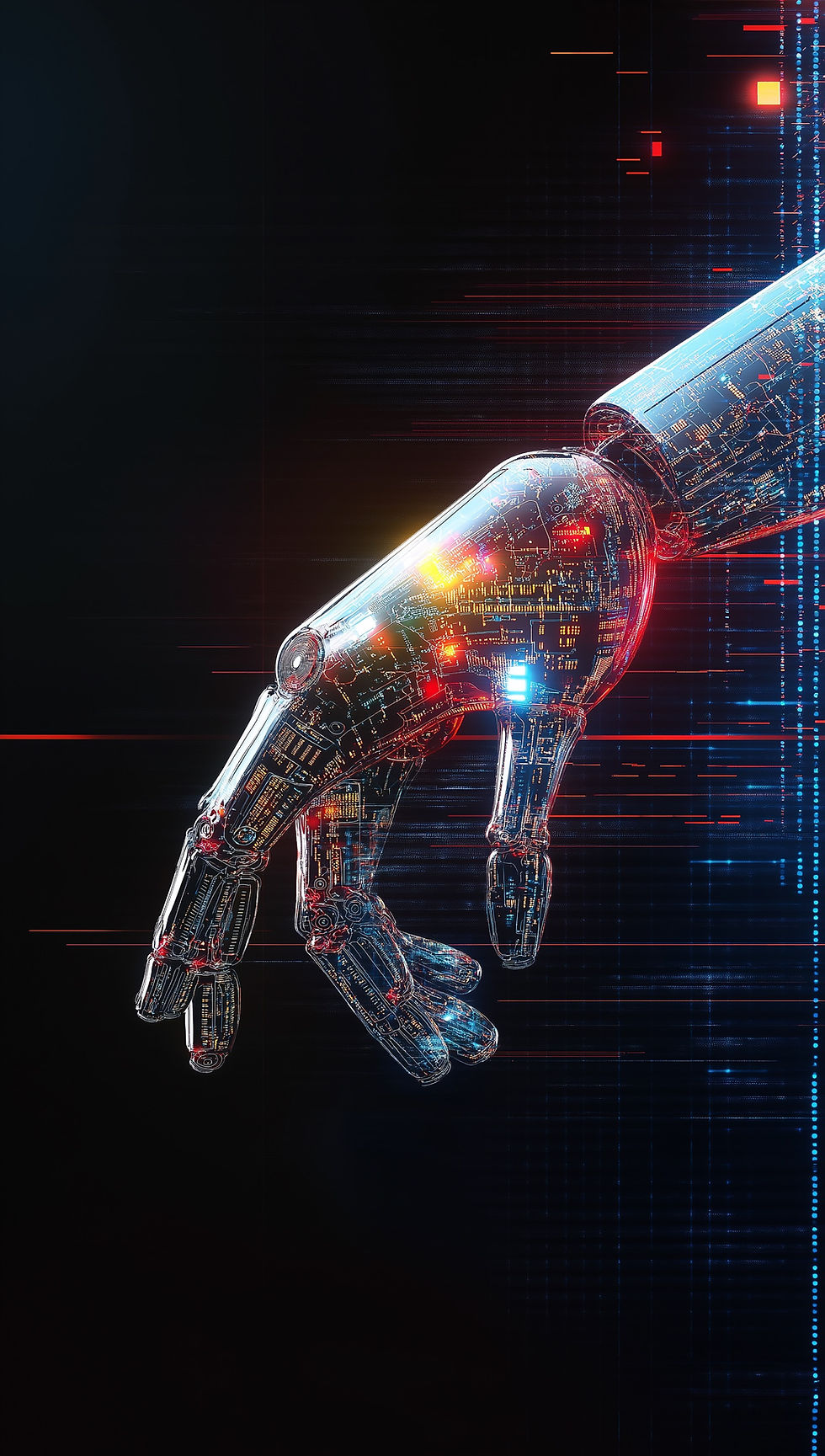Organoid Intelligence (Oi): The Next Frontier of Biocomputing
- ahmed Kabeer

- Jun 26
- 3 min read
In the rapidly evolving world of artificial intelligence (AI), a new paradigm is emerging—not from silicon chips, but from the building blocks of life itself. This revolutionary concept is known as Organoid Intelligence (OI), a field that merges neuroscience, stem cell biology, and computing. It promises to redefine how we understand intelligence, process information, and design future technologies.
What Is Organoid Intelligence?
Organoid Intelligence (OI) refers to the use of human brain organoids—tiny, three-dimensional clusters of neural cells grown from stem cells—to perform computational tasks. These mini-brains, though only a few millimeters in size, replicate key features of the human brain, including its cellular architecture, electrical activity, and ability to learn.
Unlike AI, which relies on digital algorithms and machine learning models, OI draws on the biological computing power of living neurons to process and store information. In essence, OI aims to create “biological computers” that can think, learn, and adapt—using real neurons instead of artificial code.
How Are Brain Organoids Made?
Brain organoids are created using induced pluripotent stem cells (iPSCs)—adult cells reprogrammed into a stem-like state. Scientists then guide these cells to differentiate into neural tissue in controlled lab environments. Over time, these tissues organize into structures that resemble early-stage human brains, complete with networks of active neurons.
Researchers can then integrate these organoids with microelectrode arrays to monitor and stimulate their activity, effectively interfacing biology with electronic systems.
Organoids vs. Artificial Intelligence
Feature | Artificial Intelligence (AI) | Organoid Intelligence (OI) |
Substrate | Silicon chips | Living neurons |
Energy efficiency | High | Ultra-efficient |
Learning ability | Programmed | Adaptive and emergent |
Memory | Binary/digital | Biochemical/synaptic |
Flexibility | Task-specific | Generalizable (potentially) |
OI systems are believed to be far more energy-efficient than traditional computers. The human brain, for example, uses about 20 watts—less than a light bulb—yet outperforms any supercomputer in complex cognition.
Applications of Organoid Intelligence
Though still in its infancy, OI has vast potential across many domains:
1. Bio computation
Biological processors made from brain organoids could perform tasks that are computationally intensive for conventional AI—like pattern recognition, associative learning, or sensory integration.
2. Disease Modeling and Drug Testing
Because organoids can be made from patient-specific stem cells, they provide a powerful platform for modeling neurological diseases such as Alzheimer’s, epilepsy, or autism, and for testing drug responses in a personalized manner.
3. Neuroethics and Consciousness Studies
OI raises profound questions about the nature of consciousness and self-awareness. By studying learning in brain organoids, scientists hope to unravel the mysteries of cognition and even the biological basis of consciousness.
Challenges and Ethical Considerations
Organoid Intelligence is a groundbreaking but controversial field. Key challenges include:
Ethical boundaries: Could organoids become sentient or feel pain? How do we define consciousness in a lab-grown brain?
Scalability: Can organoid systems be scaled up for practical computing use?
Integration: How can we effectively interface biological systems with digital hardware?
Scientists and ethicists are calling for global frameworks to guide research in OI responsibly.
The Road Ahead
As OI research gains momentum, collaborations are forming across disciplines. The Johns Hopkins-led Organoid Intelligence (OI) Initiative, for instance, is developing “bio-computers” by combining brain organoids with advanced machine learning tools.
While it may take years—or decades—for OI to reach its full potential, the concept itself represents a fundamental shift in how we understand intelligence, not as something exclusively artificial or digital, but as something that can arise from living matter.
Conclusion
Organoid Intelligence is more than a scientific novelty; it may be the birth of a new form of cognition—organic, adaptable, and alive. By merging biology and technology, OI holds the promise to expand the frontiers of computation, neuroscience, and ethics.
As we stand at this crossroads of artificial and organic intelligence, one thing is clear: the future of thinking machines might just come from a petri dish.
by IDDCR Global Research CRO





Comments